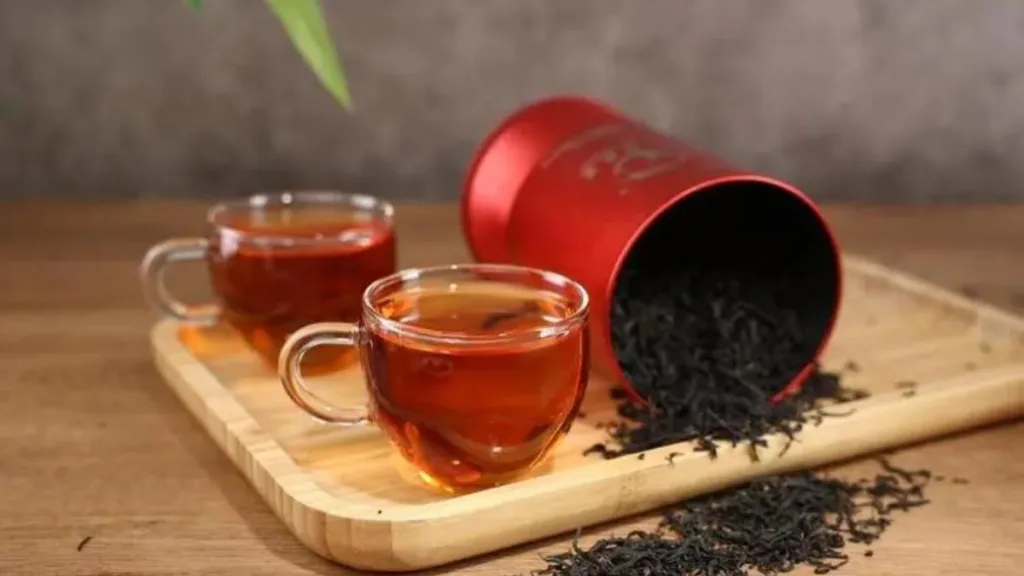Are you noticing your once luscious black locks slowly turning white? The thought of covering those gray hairs with commercial hair dyes might cross your mind, but the pungent chemicals and potential damage to your hair and scalp can be discouraging. Experts warn that the risk of breast cancer may increase by up to 60% with frequent use of permanent hair dyes. Thankfully, there’s a natural and chemical-free alternative to commercial hair dyes that not only helps protect your hair but also poses no harm to your scalp. Let’s explore how you can use black tea to dye your hair at home.
Understanding the Risks of Commercial Hair Dyes: Hair can be categorized into cuticle, cortex, and medulla. The hair dyeing process typically involves opening the cuticle with ammonia to expose the cortex, bleaching the cortex with hydrogen peroxide, and then depositing the dye into the cortex to achieve the desired color. A common chemical in hair dyes is P-Phenylenediamine (PPD), which assists in the coloring process. Whether in permanent or semi-permanent hair dyes, PPD may be present, with higher concentrations in darker shades.
While the carcinogenicity of PPD is classified as level 3, there isn’t enough evidence to definitively prove its carcinogenic effects in humans. However, animal studies have shown an increased risk of cancer, including leukemia and bladder cancer, associated with PPD. Therefore, minimizing the frequency of hair dyeing is considered a safer approach, with a recommendation not to exceed three times a year.
For each hair dyeing session, a gap of at least three months is advised, and a protective liquid should be applied before dyeing to prevent issues such as redness, swelling, pain, heat, skin ulceration, or allergic contact dermatitis.
How to Dye Your Hair with Black Tea: Now, let’s delve into the process of using black tea to naturally dye your hair. This method is not only a safer alternative but also promotes hair health.
1. Prepare Black Tea Solution:
- Choose a robust tea variety such as black tea or pu-erh tea.
- Steep the tea leaves in hot water for 10-15 minutes, allowing the release of pigments and tannic acids.
2. Wash Your Hair:
- Prior to dyeing, ensure your hair is clean to remove excess oils and impurities, allowing the black tea solution to penetrate effectively.
3. Apply the Dye:
- Generously apply the black tea solution to your clean hair. You can use a sponge or a spray bottle to ensure even distribution.
- Cover your hair with plastic wrap and a towel, letting it sit for 30 to 60 minutes, adjusting the duration based on personal preference.
4. Rinse Your Hair:
- Wash off the black tea residue, and use shampoo to clean your hair thoroughly. Opt for lukewarm water to prevent any damage to the hair.
Tips for Natural Hair Dyeing:
- Choose hair dye products with recognized labels and complete instructions.
- Conduct a skin allergy test on a small area like the forearm 48 hours before using the hair dye to ensure safety.
- Use a protective solution before applying hair dye to prevent direct irritation to the scalp.
- Substitute rubbing and washing with a gentle application method.
- Avoid hair dyeing on wounded or damaged skin.
The Benefits of Black Tea for Hair: Black tea, when used for hair dyeing, offers more than just a color transformation. Its components contribute to various benefits for hair health.
Amino Acids:
- Provide moisture to the hair.
- Suppress sebum production, preventing bacterial growth and avoiding scalp odor.
- Promote scalp blood circulation, contributing to overall scalp health.
Caffeine:
- Has a firming effect on the scalp.
Tannic Acid:
- Acts as a moisturizer, nourishing and protecting the hair.
Natural Black Tea Hair Dye Recipe: For a natural black tea hair dye solution, follow these steps:
Ingredients:
- 3 black tea bags
- 500 ml hot water
Instructions:
- Place 3 black tea bags in 500 ml of hot water.
- Let it cool and transfer the solution into a spray bottle.
Application:
- Spray the solution directly onto damp hair, massaging the scalp when the hair is wet.
- Wait for 30 minutes to 1 hour, allowing the black tea to fully saturate the hair.
- Wash out the black tea residue with shampoo and rinse thoroughly with water.
Using black tea as a hair dye is not only a healthy choice but also a hair-nourishing one. The pigments from black tea adhere to the hair, providing a natural coloring effect. While the result might not be as immediate or intense as chemical dyes, the process is entirely natural and harmless to both your hair and scalp.
In conclusion, embracing black tea as a natural hair dye option not only covers those gray strands but also promotes healthier, more vibrant hair. So, the next time you’re considering a hair dye session, why not reach for black tea and enjoy the dual benefits of color and care for your hair?



